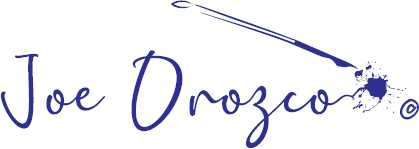How to Write a Cover Letter
The cover letter is the second most important piece of your job application. If the résumé could be thought of as a window into your professional qualifications, the cover letter is an invitation to sit in your proverbial living room for a more personal look into your character, so what kind of impression should you be giving prospective employers? More importantly, what should you consider avoiding?
Structuring Your Cover Letter
Let’s start with the general structure of a cover letter. First, while there is debate as to the acceptable number of pages for a résumé, there should be no doubt that a cover letter should be limited to one page. Chances are good that your letter will only be skimmed, so rather than risk spreading your excellent qualities across multiple pages and minimizing their effect, package them neatly into one easy-to-follow narrative.
When someone asks what you do in conversation, it’s usually a great opportunity to give a few well-chosen highlights of yourself, not a rambling monologue.
Second, the salutation is important. Your physical address and date should be followed by the name, title, company, and address of the person receiving your application. If the name is not apparent from the job listing, consider calling the employer to find out to whom your letter should be addressed. If the listing specifically says no calls are welcomed, do not use the phone call as an opportunity to coax more information about the position from the person answering the phone.
Sometimes it will not be possible to obtain a name or address. In this case, simply address your letter: To Whom It May Concern.
The Body of Your Cover Letter
Next, consider the elements of the cover letter. I personally stick to four paragraphs.
In the introductory paragraph I tell the employer what position I’m applying for, where I heard about the opening, and provide a very brief one to two-sentence summary of my professional qualifications.
In the second paragraph I talk about one to two major achievements in past jobs relevant to the position I’m applying for. Give specific, succinct examples. Show the results of those achievements. Always tie it back to the position you’re applying for.
What’s the difference between a skill and an achievement?
A skill is something like your ability to remain calm under pressure, your ability to speak more than one language, your proficiency with a specific software, etc. These would usually be listed under the Profile of Qualifications section of your résumé.
Achievements would be listed under specific employers where you accomplished something notable like generating X percent of sales or managing a program that yielded X outputs/outcomes. Achievements are what you want to highlight in the second paragraph.
I usually devote the third paragraph to specific reasons for why I’m interested in working for that particular employer and elaborate on a few skills listed in my résumé. This is your way to show you are not just sending out a form letter. You want to show you studied not only the position, but the employer behind it.
In the final paragraph I give a concluding pitch for why I’m interested in joining the employer, list any attached documents, and close with a sincere thank you for their consideration of my qualifications. The final paragraph is also the point where I address salary expectations if these are specifically requested in the job listing.
Things You Should Not Do in a Cover Letter
Stay away from these habits:
- Do not recycle a letter you used for a previous employer.
- Do not forget to write down the correct company name and contact person in your letter.
- Do not include strengths or examples not relevant to the position you’re applying for.
- Do not regurgitate what a person could easily read in your résumé.
- Do not ramble beyond a single page.
Things You Should Do in a Cover Letter
And here are things you ought to consider incorporating into your letter:
- Adress your letter to a specific contact person with the correct spelling of their name and title.
- Double check your whole letter for formatting, spelling and grammatical errors.
- Pay attention to any questions or instructions for the cover letter noted in the job listing.
- Use keywords and language found in the job posting to guide your document.
- Use bullet points if this would help the organization of your thoughts.
- Use proper white space to ease the visual presentation of your document.
- Share your letter with someone neutral to gauge how well the letter was written.
What’re your thoughts regarding cover letters? Did I miss anything? Do you have a formula that has worked well for you? I look forward to reading your comments!



